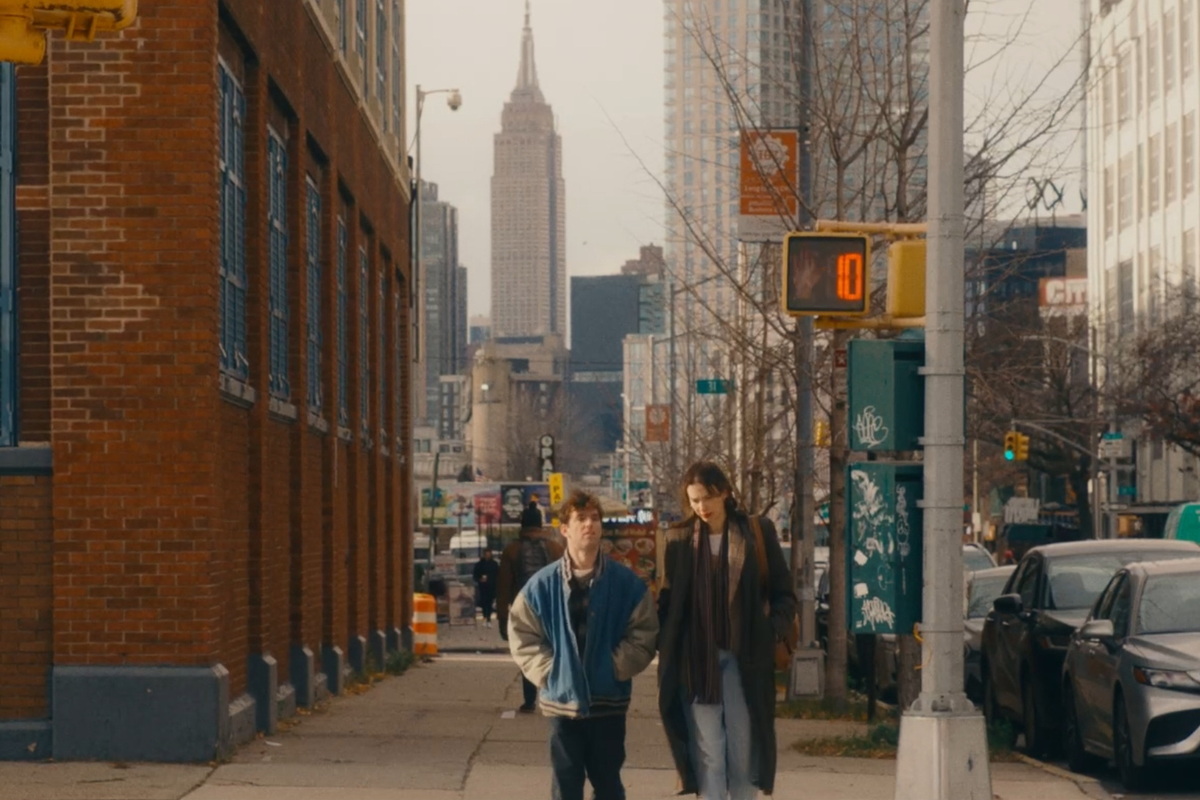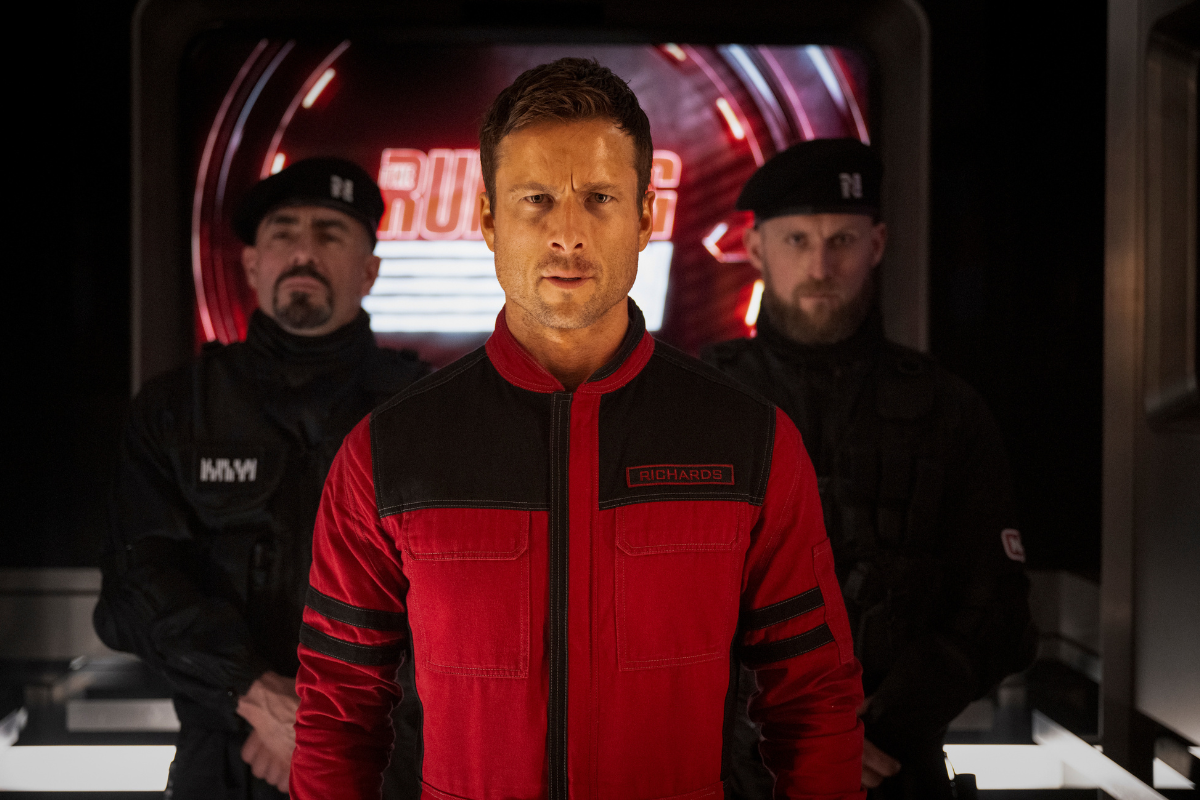Interview with ‘The Woman of the Hour’ Screenwriter Ian McDonald
‘Woman of the Hour’ screenwriter Ian McDonald talks about how this true crime story piqued his interest, and how the structure of ‘The Dating Game’ show informed the structure and flow of this quiet on-the-edge-of-your-seat thriller. Plus, he shares what his creative conversations were like with director (and star) Anna Kendrick and how her big picture notes homed in what mattered the most for the story.
The stranger-than-fiction story of an aspiring actress in 1970s Los Angeles and a serial killer in the midst of a yearslong murder spree, whose lives intersect when they’re cast on an episode of The Dating Game.
Woman of the Hour screenwriter Ian McDonald recently spoke with Script about how this true crime story piqued his interest, and how the structure of The Dating Game show informed the structure and flow of this quiet on-the-edge-of-your-seat thriller. Plus, he shares what his creative conversations were like with director (and star) Anna Kendrick and how her big picture notes homed in what mattered the most for the story.
This interview has been edited for content and clarity.
Sadie Dean: I'd love to talk about how you specifically landed on this true crime story and finding your in-point for the story?
Ian McDonald: It's kind of strange, because I wrote the first outline of this eight years ago, so it's been a long time in the coming. And so, the reasons why I started, it may seem, I don't know, dated or something now, but basically I was interested in doing a true crime film, and was looking around for a story that was not only interesting and dramatic, but which also felt like it could be useful in some ways…most serial killers are kind of a dime a dozen. They're not actually all that interesting as people or as characters. They're psychopaths and there's really only so much you can do with that. What makes them interesting is sort of the context surrounding them.
And I stumbled upon the story somewhere online, and I started reading about Rodney Alcala. There was this LA Weekly article that had this interview with a coworker of his from when he worked at the LA Times and the coworker said that he used to come into work with these photo albums filled with pictures that he had taken, and he would show them off to everyone. And oftentimes there would be nude photos of underage girls and boys. And the coworker was like, 'Yeah, we all just sort of thought like, oh, that's Rodney. He's the sexual libertarian, I guess. And I guess this is OK, because if it wasn't, he'd be ashamed of it, but he's not. So maybe that's on us.'
I was reading this right around the time that Trump's locker room tape came out, and that was sort of the connection that I made – and it's not just Trump, it's Harvey Weinstein, it's a lot of people. Where it's just like, in order for bad men to flourish, a lot of good people, quote-unquote, have to look the other way in order for this behavior to sort of perpetuate itself.
And that was the thing that I found really interesting about him, because on a lot of true crime websites, you will hear people sort of compare Rodney Alcala to like Ted Bundy, because they're both well educated. And kind of handsome, but that's kind of the extent of it, because beyond that, they're actually really different people. Ted Bundy was a chameleon, and he was really good at making himself look like something he wasn't. And Rodney Alcala sort of never pretended to be anything but what he was. And so, it was everybody around him that sort of accommodated that. And that was the thing that I found really interesting about him.
Sadie: When it came to developing these characters and their world, what was that process like?
Ian: It's funny, because a lot of decisions were kind of made for me, not by producers or anything, just because of the nature of the show. I had never seen The Dating Game before this, and once I started watching it, it's like, oh, each episode is two segments, and each segment is 12 minutes long. And so, you kind of go, OK, if this is based around a 12-minute-long TV segment, well that tells you something right there. This can't be the climax of the movie. It can't be the introduction. It probably needs to be nonlinear. And so, if you're writing about that segment at all, OK, well, this is just sort of informed you that your structure is going to be a certain structure. And then you have to figure out what's going in between these other segments. That's kind of where the structure of it all came from.
In terms of the people, one of the things that Anna [Kendrick] and I talked about when we first met, when she came on as a director and not merely an actor, was balancing the sort of true story versus what we were going to fictionalize aspect of it.
Sadie: Was there a thematic anchor for the two of you?
Ian: It was always evolving. It was in development with a series of producers, and then different directors, and so there were a bunch of previous iterations of the script that weren't radically different. Basically, The Dating Game stuff stayed the same from the first draft to the last. Everything around that tended to move around a lot because Rodney had a lot of victims, and depending on who you're choosing to focus on, each of those micro-narratives tells a different story. And depending on what you open and close the movie on, you're changing the macro narrative. So that was the stuff that pivoted the most. I was really interested in well-meaning people looking away from bad behavior, and that's still in there. I don't think it's quite as prominent as it was in earlier drafts.
When Anna came on...what was interesting was I've worked with actresses or actors who have become directors before and since, and the experience has been different with all of them. And so, I wasn't totally sure how clear of a vision she was going to bring to this, but it was crystal clear. She knew what she wanted the themes to be. She had notes on the script which made it much, much better. This is undoubtedly the best version of all the versions of the script, and it is the best specifically because of the note she brought to it.
But the theme that she was most interested in is the danger that comes when we agree to be intimate with another person, and the danger associated with intimacy, and that can be dating, that can be friendship, that can mean a lot of things, but that was the thing she wanted to foreground. That's kind of baked into the idea in a certain sense, but it was her decision to really kind of elevate that, but she had other notes as well that were that were maybe more important than that.
I think her biggest contribution to the script was the hitchhiker scene...basically where it ends. I had initially fictionalized that section of it, mostly because I'm just like, ‘Man, we've just sat through l90 minutes of this guy raping and killing women. Do we really want to see this again?’ And from my perspective, I'm just like, ‘God, this seems oppressively violent, if we're just going back to that again.’ And Anna's perspective was like, 'Yes, it is upsetting, but it's the one person who kind of outwits him,' and you don't get the outwitting him scene without first getting the him attacking her scene. And so as upsetting as it is, the tradeoff is worth it. And it was something she felt very strongly about, and she was right, and it was a great note. And I think the ending is all the better because of it.
Woman of the Hour is now streaming exclusively on Netflix.
Sadie Dean is the Editor of Script Magazine and writes the screenwriting column, Take Two, for Writer’s Digest print magazine. She is also the co-host of the Reckless Creatives podcast. Sadie is a writer and filmmaker based in Los Angeles, and received her Master of Fine Arts in Screenwriting from The American Film Institute. She has been serving the screenwriting community for nearly a decade by providing resources, contests, consulting, events, and education for writers across the globe. Sadie is an accomplished writer herself, in which she has been optioned, written on spec, and has had her work produced. Additionally, she was a 2nd rounder in the Sundance Screenwriting Lab and has been nominated for The Humanitas Prize for a TV spec with her writing partner. Sadie has also served as a Script Supervisor on projects for WB, TBS and AwesomenessTV, as well as many independent productions. She has also produced music videos, short films and a feature documentary. Sadie is also a proud member of Women in Film.
Follow Sadie and her musings on Twitter @SadieKDean







